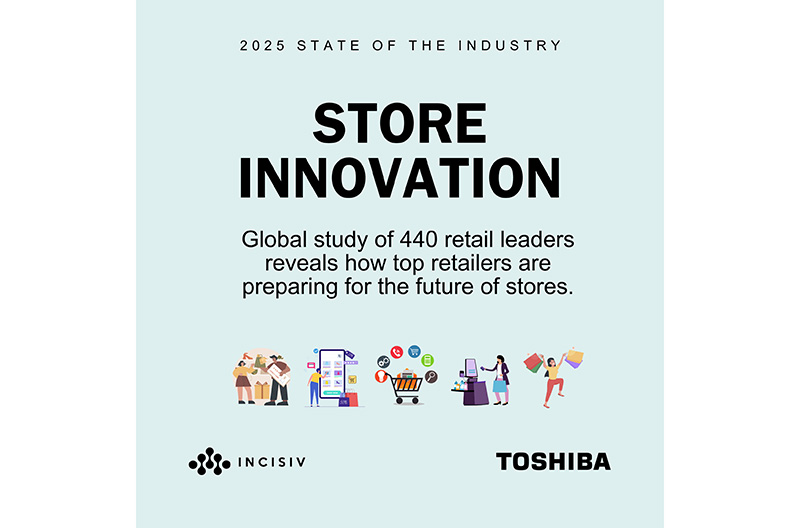As the retail industry faces pressure to redefine the role of physical stores, Incisiv – in partnership with Toshiba Global Commerce Solutions – has released “2025 State of the Industry: Store Innovation.”
The report outlines key challenges and transformative opportunities in retail as stores move beyond the traditional commerce model to embrace roles as experience hubs, community spaces and digital interaction centers.
Based on data from 440 retail technology and business leaders worldwide, the findings provide insights on retail transformation trends that highlight the need to evolve technology and operational strategies, as well as details specific to global regions, including Asia, Europe, Latin America and North America.
“The retail industry is at a crucial inflection point,” said Giri Agarwal, chief strategy officer at Incisiv.
“Our research reveals that the challenge for retailers isn’t a lack of innovation intent or investment but a fundamental mismatch between retailers’ ambitions and their ability to quickly bring new capabilities to life. The future belongs to those who can reimagine how they build and deliver solutions that align with their goals versus those who implement the most technology.”
[RELATED: Report: Grocery Media Networks Represent $8.5B Opportunity For Growth]
Key findings
- In-store personalization gaps: Despite 46 percent of retailers ranking personalization as a top revenue driver, just 9 percent have achieved industry-leading integration of digital and physical channels. Retailers are tackling this challenge by reimagining their technology architecture to enable true cross-channel personalization, with 13 percent using unified commerce platforms and 44 percent planning to do so.
- Rapid experimentation limits: Rapid in-store innovation is essential, with 44 percent of retailers prioritizing faster rollouts of in-store tech. The future of store innovation hinges on modularity, with 44 percent of retailers seeking to reduce time-to-market for new in-store technology and a 73 percent improvement rate through modern tech stacks.
- Operational excellence by balancing security and innovation: Retailers are rethinking their security architecture, with 50 percent of retailers planning to explore AI-driven loss prevention systems over the next year. Seventy-five percent expect to reduce shrink numbers, while 79 percent anticipate improved inventory accuracy.
- Sustainability is a core principle: The industry is shifting to prioritize sustainability, yet just 6 percent of retailers rate their store technologies as industry-leading for sustainability goals. They are increasingly aligning sustainability with operational efficiency, with 43 percent prioritizing extending technology lifecycles and 74 percent expecting a reduction in energy consumption.
“The future of retail lies in building a strong, flexible foundation that supports rapid innovation and seamless integration of new capabilities. Leading retailers are blending commerce, community, and content in groundbreaking ways, redefining success beyond traditional metrics to include experiential offerings and customer engagement,” said Fredrik Carlegren, VP and head of marketing and communications at Toshiba Global Commerce Solutions.
“By adopting future-ready architectures and sustainable designs, retailers are setting new benchmarks while transforming physical stores into dynamic hubs of innovation.”
NRF 2025 Incisiv Speakeasy
The 2025 State of the Industry: Store Innovation study offers a blueprint for executives navigating the accelerated retail transformation era. To understand the strategies and success, interested retail leaders can apply to attend the exclusive NRF 2025 Incisiv Speakeasy panel and dinner hosted by Incisiv and Toshiba.

